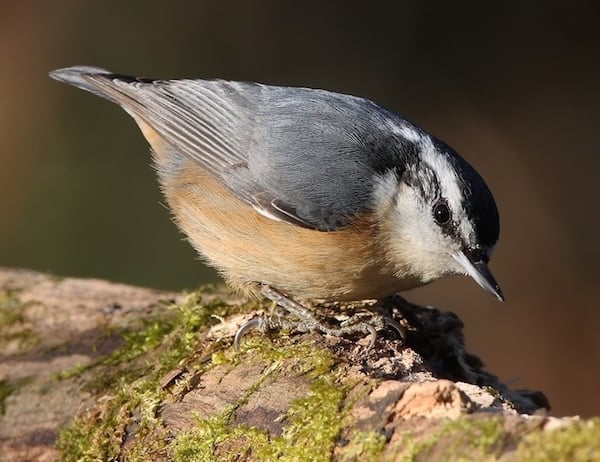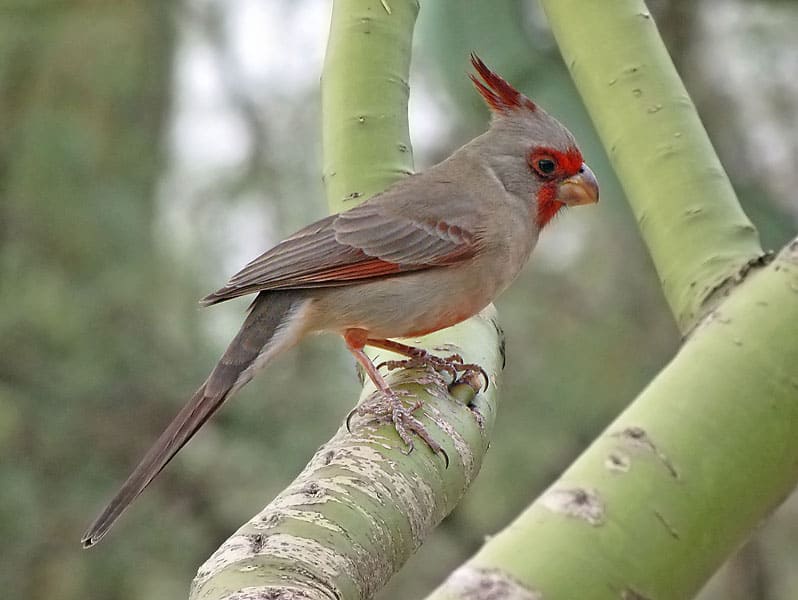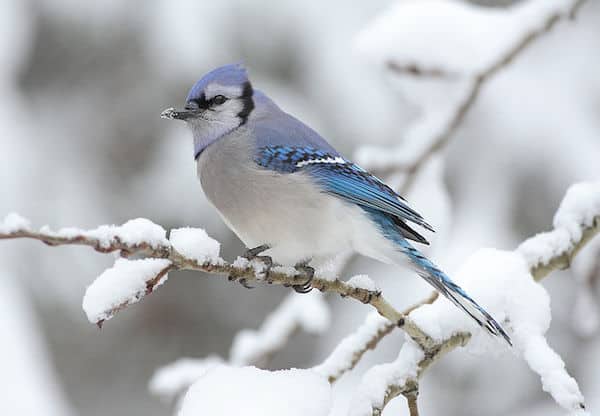Look for
The orange (not red) breast and black line through the eye set apart the red-breasted nuthatch from the larger white-breasted. The male has a black cap and bright orange belly; the female has a blue-gray cap and pale orange belly. The red-breasted nuthatch is about 4 ½ inches long.
Nuthatches have powerful legs and feet and can climb up and down tree trunks and along branches. Red-breasteds look like tiny wind-up toys as they walk along tree trunks and branches. Brown creepers can only crawl up—never down—because they must use their tails as props to support themselves.
Listen For
The song of the red-breasted nuthatch has been compared to the tooting of a tiny tin horn. The notes are nasal, each one slurring upward in tone: yenk, yenk, yenk, yenk.
Find It
Northern coniferous forests and mountains are the summer home of the red-breasted nuthatch. In winter, red-breasteds can be found in a variety of wooded habitats. Like their white-breasted cousins, they will visit backyard bird feeders. The red-breasted nuthatch is unique among North American nuthatches as the only species to undergo rampant movements to warmer weather primarily due to shortages of winter food on their breeding territory.
Feeding Behavior
Red-breasted nuthatches enjoy munching on beetles, caterpillars, spiders, ants, and flies during breeding season and conifer seeds outside of breeding season. Primarily, they forage in coniferous trees, walking up and down the trunks probing in crevices of bark for tasty snacks.
Nesting Behavior
Both male and female red-breasteds participate in cavity excavation. Like woodpeckers, you will find accumulations of sawdust on the ground at the base of a tree because red-breasteds throw the sawdust they remove from their cavity out the cavity entrance.
Uniquely, red-breasteds apply sticky conifer resin to the entrance of their cavity to reduce both competitive and predatory interactions. Typically, the female will lay six eggs per clutch and incubate them for almost two weeks. Young red-breasteds fledge at about three weeks old.
Wow!
The name nuthatch describes this family’s habit of wedging a seed in a crevice, then hacking the seed open with the chisel-like bill.




